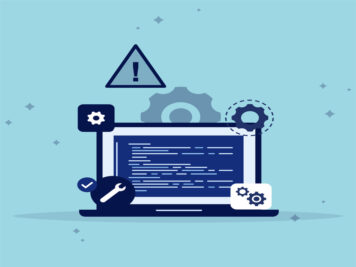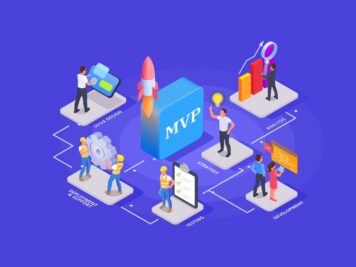All software development projects involve some degree of risk, some easily avoidable, while others are hard to predict due to the uncertainty involved. This constant risks in software development keeps product managers on their toes. So, when product managers work on creating a software product, they may face apparent risks like a lack of experienced developers or a potential failure due to unforeseen circumstances like changes in end-user behavior.
However, the landscape of software development is constantly evolving, and new challenges are emerging. A recent survey by Infragistics highlights that the biggest software development challenge in 2024 is incorporating Artificial Intelligence (AI) into the development process (40.7%).
Everyone from software engineers to students is trying to incorporate artificial intelligence (AI) into their daily tasks. This growing interest in AI presents a big challenge for product managers since effectively incorporating AI into software development requires careful planning, qualified personnel/team, and a deep understanding of the technology’s capabilities and limits.
The best way to deal with any software development-related risks, including those with AI implementation, is to detect them early, analyze them, and then work on mitigating them. But it is easily said than done. In this article, we will discuss some of the significant software development risks faced by product managers and how to avoid them.
Categorizing Risks in software development.
Software development projects are not inert to risks (potential issues) that can affect their success. Such risks include unexpected occurrences like high attrition in the team, overstretching budget, technical risks, tech debts, building the wrong features, bad adoption among end-users, etc.
Software development risks can be categorized in many ways, such as long-term and short-term, internal and external, strategic or execution, or apparent or hidden risks. But the best way to categorize them is through a four-quadrant matrix based on the degree of impact and the urgency to resolve them.
Software Development Risk Quadrant Matrix:
- Critical Risks:
These risks significantly impact the software development’s success and must be mitigated as quickly as possible. Some examples are a high attrition rate among software teams, missing critical deadlines, compromised security, etc.
- Major Risks:
These risks, if unchecked, can create substantial future issues but not near future ones. Some examples are tech debts that can cause future flexibility or scalability issues, team shortage, wrong prioritization of features, high burn rate, banking on unproven technologies, government rules, bad quality software code, etc.
- Moderate Risks:
Such risks will not impact the software’s success but can create short-term setbacks. These risks concern bottlenecks, operational inefficiencies, or short-term roadblocks, and such issues, if not sorted on priority, can quickly become significant risks in the future.
- Minor Risks:
Such risks are usually predictable and can be easily mitigated. It also doesn’t need immediate solutions and can be neglected to focus on other priority work.
In this blog, we have identified the top 6 risks you can stay aware of while developing your software and how to mitigate them if you face any such risks.
What are the 6 risks in software development, and how to dodge them?
The types of risks in software development are like hidden potholes on the road to a successful product. They can derail your project and cause major problems. Below are six of the most common types of risks in software development, along with tips on how to mitigate them, ensuring a smooth path for your project.
- Missing the deadline:
It is a risk related to time or project delivery. Sometimes software development has tight deadlines, which becomes challenging to achieve, and teams sometimes struggle to meet such tight deadlines. Thus, scheduling risk can occur due to miscalculation in project time, project manager not keeping track of status, failure to finalize major product features on time, and unexpected project expansion.How to mitigate this risk?
- Adopt agile methodology
- Ensure all team members are entirely involved from planning to estimation and open to frequent feedback.
- In case of unexpected project expansion, teams are ready to expand for better speed and don’t miss the deadline.
- Spending more than the budget:
Budget or funds is one of the significant risks in a software development project. Budget or monetary risks will likely occur when you overspend the allocated money. It can arise due to improper budget estimation, sudden expansion in the project development, incorrect budget handling, and non-tracking of finances. You can also face a budget crisis if you haven’t saved some amount as a reserve to meet any unexpected expenses. The wrong estimation can cause a severe impact on your project delivery.How to mitigate this risk?
- Do periodic assessments of budget spending to identify instances of going beyond assigned budgets.
- Never isolate your tech team while discussing the estimations because they are the best ones to help with correct calculations.
- Low team productivity:
Issues related to productivity can turn into severe risks in software development. If you struggle with productivity, it can be due to delays, employee burnout, unavailability of the proper project plan, lack of streamlined communication, and poor project management.
How to mitigate this risk?
- Set strong goals to keep your team motivated.
- Monitor productivity levels using tools like burn-down charts or iteration reports.
- Understand the aspirations of team members and align them with the vision.
- Establish strong multi-level communication.
- High team attrition rate:
Staff turnover in the IT sector is higher than in any other industry, and the team attrition rate can be seen as a major risk in software development. Reasons that lead to high staff turnover can be less compensation, lack of opportunities, dissatisfaction with the work environment or leadership, and lack of availability of creative tasks. If the team attrition continues to grow, your organization is at a higher risk of experiencing revenue and productivity loss, a domino effect, and losing expertise.
How to mitigate this risk?
- Build a healthy and positive work-life balance.
- Give opportunities for career growth.
- Recognize the good work.
- Competitive salaries.
- Scope Creep:
Changes to the project scope can adversely affect the project schedule, budget costs, and resource allocation and hamper the milestone completion. Scope creep usually occurs when stakeholders add new project requirements after the execution of the project. Such scenarios directly result from insufficient planning, wrong technical assessments, limited understanding of business requirements, communication gaps, or external factors like new privacy and security rules, etc.
How to mitigate this risk?
- Do a thorough analysis of the business requirements.
- Document software development requirements and get them reviewed by stakeholders.
- Involve the software development team in deciding the development roadmap.
- Separate project into manageable segments.
- Start from building POC and then iterate using user feedback to avoid sudden surprises.
- Low product adoption:
The user’s response to your software is a risk whose impact is extreme on your final software product. The success of a product is directly proportional to the number of users engaging with the product. Based on your user engagement, you can quickly identify the success rate of your product. Avoiding user engagement at the early stage of software product development can arise due to improper research of the market and your target audience, not paying attention to the audience’s needs, and offering the wrong tech solution and outdated UX/UI design.
How to mitigate this risk?
- Conduct in-depth research using surveys and FGDs on your target audience to understand their needs.
- Test your software in advance with beta testing, followed by periodic iterations based on user feedback.
- Build an intuitive user interface that requires minimum cognitive efforts to learn.
- Focus on the usability of the features.
Conclusion
Ignoring the software development-related risks or underestimating them in your software development projects is a big mistake to make, and it can drastically hamper the success of your business. To make your software project immune to any such risks, it is crucial to identify them on time and take quick actions to resolve them.
By prioritizing risk management in software development, you can:
- Improve project predictability
- Save time and money
- Enhance team morale
This proactive approach paves the way for smoother development processes and a higher chance of delivering successful software solutions.
If you are looking for a software development partner to help you with your software-related requirement. In that case, you can always reach out to us. Also, if you are interested in knowing the aspects to consider while selecting an offshore software product development partner, then you must read our blog that captures the essential points for you to analyze.
FAQs
What are software development risks?
There are many, but some of the most common are schedule delays (project management), budget overruns (cost estimating), low team productivity (agile development, team communication), and high employee turnover (IT talent retention, employee motivation).
Can you provide some risks in software development examples?
Unexpected challenges could arise, such as schedule delays caused by underestimation of features or budget overruns induced by rapid technological advances. These are just a few examples that emphasize the need for risk management.
What is the importance of risk management in software development?
Risk management in software engineering allows you to predict problems and take proactive measures to mitigate them. This saves time and money (delays and rework), increases project predictability (planning and resources), and increases team morale (reduced stress).
What steps are involved in software risk management?
Software risk management involves identifying, assessing, prioritizing, mitigating, and monitoring risks.
How can I get started with software risk management?
Use frameworks (FMEA), conduct risk workshops, and implement risk management technologies.








